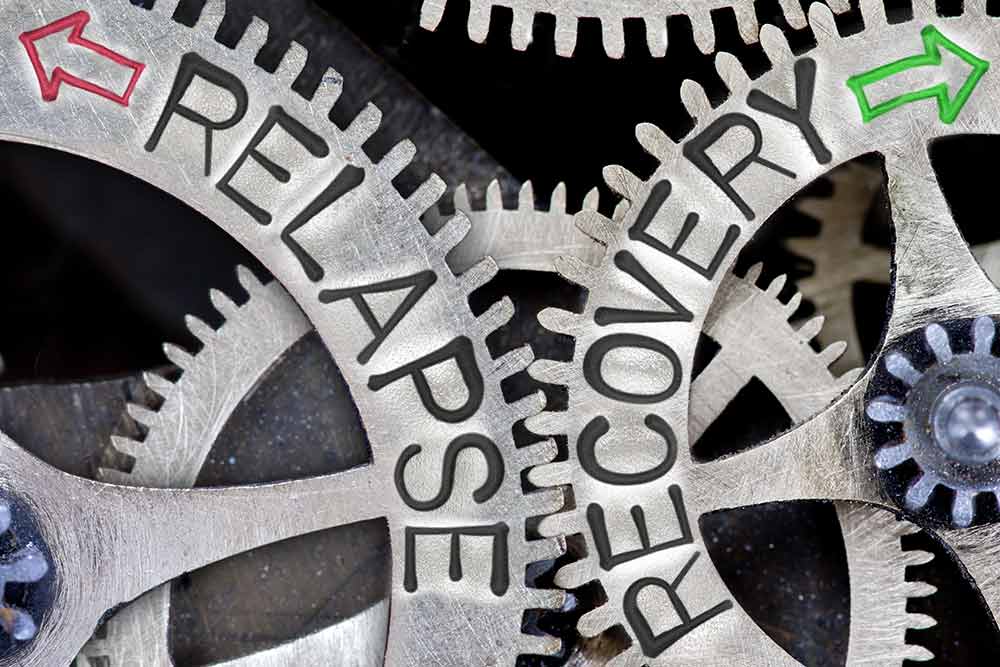Relapse Triggers
Recognizing your relapse triggers is one critical element in preventing relapse
and coming up with a relapse plan. Relapse triggers can include:
- Stress from work or from the process of finding gainful employment (made more difficult because of negative or little to no professional references, a spotty work history or resume, and a criminal record)
- Emotional stress from dealing with creating new relationships and restoring past and broken relationships damaged due to alcohol abuse
- Financial insecurity and hardship as a result of poor work retention or irresponsible spending on drinking and substances
- Physical consequences of drinking and using such as heart issues, liver problems, hepatitis, kidney failure, injuries as a result of fighting and aggressive behavior while drinking
- Inability to deal with conflict
- Lack of experience navigating daily life challenges that arise unexpectedly (for example, being late to a job interview because your bus was late or traffic was bad)
- Dealing with dysfunctional or unsupportive family or friend systems
- Added responsibilities and demands as a direct result of legal consequences of drinking and using such as drug testing, probation, house arrest, court hearings, breathalyze testing, suspension of license, in- or outpatient treatment programs, and support groups
- Struggles with locating and articulating feelings
- Feelings of resentment and anger toward oneself and/or others over past wrongs
Daily Recovery Maintenance
Effective relapse prevention is closely aligned with the maintenance of a
daily recovery lifestyle. There are many simple ways to make relapse prevention easier for anyone to manage on a daily basis. First, re-conceptualizing recovery as a daily maintenance process and way of life rather than a crisis management issue is a powerful first step in relapse prevention. The aim of relapse prevention is to promote sustainable change in behavior, and like all change, it is a process that occurs in stages and small increments of action and time.
Craving Control
Learning how to recognize a craving is the first step in controlling a craving rather than letting a craving control you. The second step is to practice letting a craving pass. Many people relapse during the first six months of abstinence, because they never gain the necessary and powerful sober experience of having a craving come and go without using substances to move through it.
Science and neurobiology have proven that there is a direct correlation between stress and craving. If a person can learn more effective ways to deal with stress and how to sit through or get through a craving without drinking or using drugs, they can save themselves from acting on a compulsion to continue drinking and using drugs.
Emotional Management
Gaining the experience of going through a feeling without numbing with a substance is just as important as going through a craving without turning to a substance.
Learning to identify emotions as they come up is the first part of learning how to have better control over emotions that once caused destructive behavior patterns, such as abusing drugs or alcohol. For many problem drinkers accustomed to numbing out feelings, learning how to understand the feeling they are having, and taking a pause before reacting to that feeling, are important and challenging skills to acquire.
Avoiding Old People, Places and Things
Staying sober also means creating new and different environments to support behavioral changes. Environmental cues related to old drinking or drugging behaviors can and do cause relapse. Revisiting old bars and neighborhoods where drinking or purchases of substances took place, for example, can trigger a reflexive craving or selective memories of “the good old times” that obscure the negative consequences of a past habit. Sometimes just the smell of an old drinking place can be enough to set off a craving. Part of prevention entails safeguarding oneself from the environmental cues that trigger craving and put you at a higher risk for relapse.
Support System
Developing a support system is another helpful element of relapse prevention. Creating new routines and exploring new interests are great ways to develop a support system.
Joining a 12-step group can also help you build community and nurture connections that support prolonged recovery. Exploring passions and long-forgotten interests can also provide places and activities that put your time to better use and open up new avenues for community support.
Learning From Relapse
It is also important to remember that even if relapse occurs, it falls on a longer continuum of recovery and can be used as a tool for revising a relapse prevention plan in the future. Relapse does not have to mean the end of recovery. Instead, it can help you better target specific areas of personal struggle which have proven to be the most troublesome triggers in the past.






